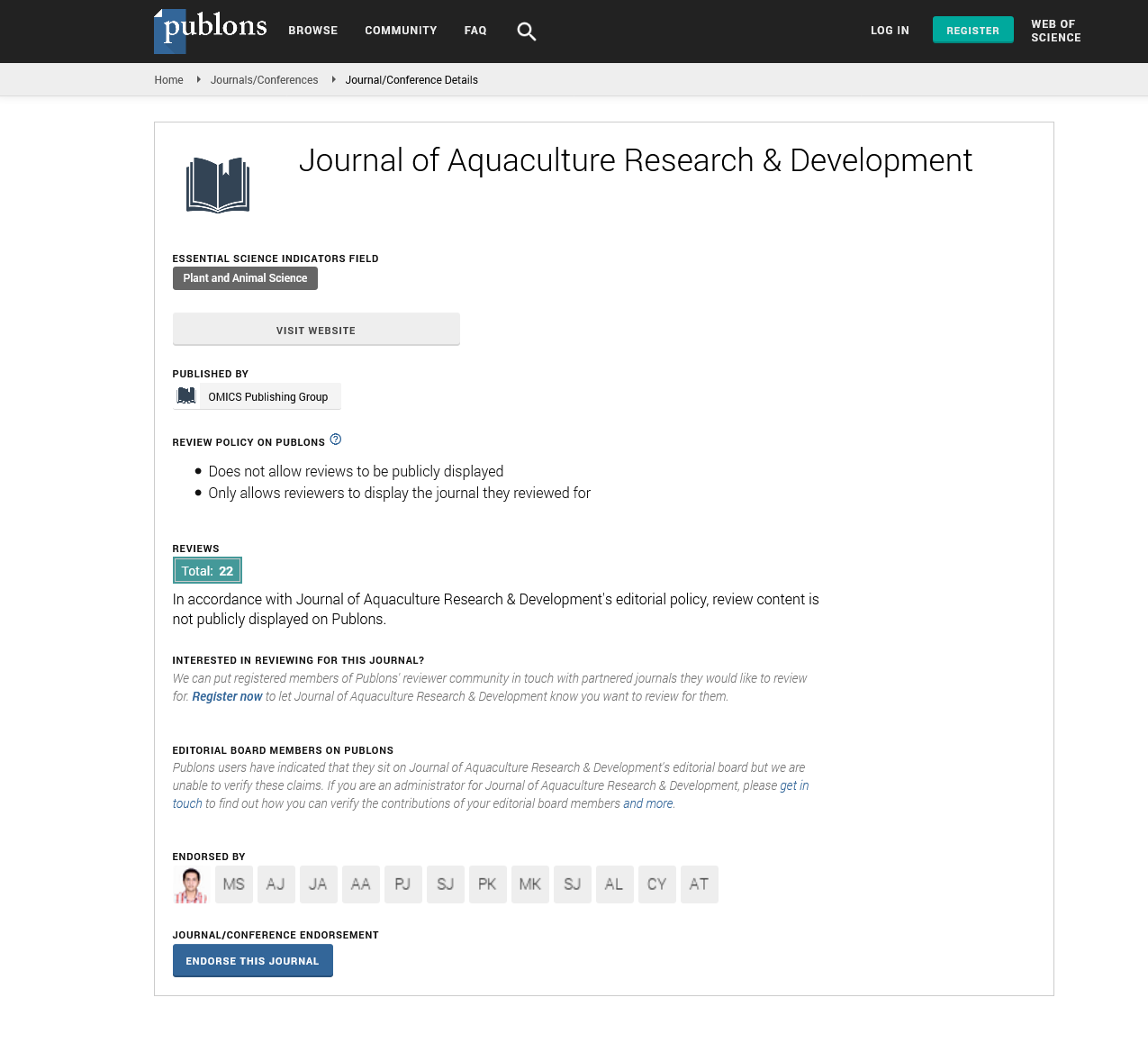Indexed In
- Online Access to Research in the Environment (OARE)
- Open J Gate
- Genamics JournalSeek
- JournalTOCs
- Scimago
- Ulrich's Periodicals Directory
- Access to Global Online Research in Agriculture (AGORA)
- Electronic Journals Library
- Centre for Agriculture and Biosciences International (CABI)
- RefSeek
- Directory of Research Journal Indexing (DRJI)
- Hamdard University
- EBSCO A-Z
- OCLC- WorldCat
- Scholarsteer
- SWB online catalog
- Virtual Library of Biology (vifabio)
- Publons
- MIAR
- University Grants Commission
- Euro Pub
- Google Scholar
Useful Links
Share This Page
Journal Flyer

Open Access Journals
- Agri and Aquaculture
- Biochemistry
- Bioinformatics & Systems Biology
- Business & Management
- Chemistry
- Clinical Sciences
- Engineering
- Food & Nutrition
- General Science
- Genetics & Molecular Biology
- Immunology & Microbiology
- Medical Sciences
- Neuroscience & Psychology
- Nursing & Health Care
- Pharmaceutical Sciences
Perspective - (2025) Volume 16, Issue 1
Adapting Gilthead Seabream Farming to Mediterranean Climate Change
Sophia Finn*Received: 01-Jan-2025, Manuscript No. JARD-25-28644; Editor assigned: 03-Jan-2025, Pre QC No. JARD-25-28644 (PQ); Reviewed: 17-Jan-2025, QC No. JARD-25-28644; Revised: 24-Jan-2025, Manuscript No. JARD-25-28644 (R); Published: 31-Jan-2025, DOI: 10.35248/2155-9546.25.16.951
Description
The effects of climate change on gilthead seabream (Sparus aurata) aquaculture in the Mediterranean are becoming increasingly evident, posing significant challenges to the sustainability and productivity of this economically important sector. As one of the most valuable farmed fish species in the region, gilthead seabream plays a key role in Mediterranean aquaculture. However, rising sea temperatures, ocean acidification, extreme weather events and shifting ecological conditions are altering the production landscape, impacting fish growth, health and farm management practices. This article provides a perspective on how climate change is influencing gilthead seabream aquaculture, highlighting the risks, adaptive strategies and the future outlook for the industry.
One of the most direct impacts of climate change on gilthead seabream aquaculture is the increase in Sea Surface Temperature (SST). The Mediterranean region is experiencing faster-thanaverage warming, with SST rising by approximately 0.4°C per decade. As a eurythermal species, gilthead seabream can tolerate a broad temperature range; however, its optimal growth occurs between 18°C and 25°C. Prolonged exposure to higher temperatures can cause thermal stress, impairing growth rates and reducing feed conversion efficiency. Elevated temperatures also accelerate fish metabolism, increasing oxygen demand while simultaneously reducing dissolved oxygen levels in the water. This creates a stressful environment, raising mortality rates and negatively affecting overall production efficiency.
Another consequence of rising temperatures is the increased prevalence of pathogens and disease outbreaks. Warmer waters create favorable conditions for opportunistic pathogens such as Vibrio spp. and Photobacterium damselae, which cause significant losses in seabream farms. In addition, warmer conditions facilitate the spread of parasites, including Sparicotyle chrysophrii, a gill parasite that thrives in higher temperatures. The combination of higher disease incidence and reduced fish immunity due to thermal stress places greater pressure on farmers to implement intensive health management practices, which may lead to increased reliance on antibiotics and antiparasitic treatments, raising concerns about antimicrobial resistance and environmental impact.
Ocean acidification, driven by the absorption of excess atmospheric CO2, is another emerging threat to gilthead seabream aquaculture. Although seabream is less sensitive to acidification compared to species with calcified exoskeletons, lower pH levels can still affect fish physiology. Acidified waters have been shown to impair olfactory and cognitive functions in marine fish, potentially altering their feeding behavior and predator avoidance. Additionally, ocean acidification can influence the availability of key nutrients and alter the composition of phytoplankton and zooplankton communities, affecting the quality of the food web and the nutritional profile of aquafeeds.
Extreme weather events, including storms, heavy rainfall and heatwaves, are becoming more frequent and intense due to climate change. In the Mediterranean, these events can disrupt farm operations, damage infrastructure and cause stock losses. Sudden temperature fluctuations and salinity changes from heavy rainfall or flooding can stress the fish, leading to increased mortality. Moreover, storm surges and high waves can damage net pens, causing fish escapes and financial losses. The unpredictability of these events makes farm management more challenging, necessitating the implementation of more robust infrastructure and risk-mitigation strategies.
The ecological shifts driven by climate change also have indirect effects on gilthead seabream aquaculture. Changes in marine currents, salinity and nutrient cycling can alter the availability and quality of natural resources, such as wild seed stocks and feed ingredients. For example, reduced fishmeal and fish oil availability due to declining wild fish populations could drive up feed costs, making seabream production less economically viable. Additionally, climate-driven alterations in plankton composition may affect water quality and oxygen levels in aquaculture sites, further impacting fish health and growth performance.
In conclusion, climate change poses multifaceted challenges to gilthead seabream aquaculture in the Mediterranean, affecting fish health, productivity and farm operations. Rising sea temperatures, increased disease prevalence, ocean acidification and extreme weather events are reshaping the industry’s J landscape. However, through adaptive strategies, technological innovation and sustainable management practices, the sector can enhance its resilience and continue to future research.
Citation: Finn S (2025). Adapting Gilthead Seabream Farming to Mediterranean Climate Change. J Aquac Res Dev. 16:951.
Copyright: © 2025 Finn S. This is an open access article distributed under the terms of the Creative Commons Attribution License, which permits unrestricted use, distribution, and reproduction in any medium, provided the original author and source are credited.

